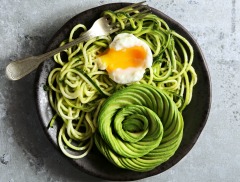Don't just meal plan... meal plan intelligently - with Meal Genius! Sign up for our free newsletter to get delicious recipes, sample meal plans and a whole lot more!
Nectarines
Nectarines, cousin to the peach, were possibly named after nektar-meaning "drink of the gods".
More than 150 nectarine varieties exist, each one varying slightly in size, shape, taste, texture, and color.
Ranging from a light golden yellow with a reddish blush to almost entirely red, nectarines are a good source of vitamin C and also contain flavonoids.
Because nectarines are on the Dirty Dozen, be sure to always pick organic.
Glycemic Index=42
Glycemic Load=5
Antioxidant Score (ORAC)=750
The Benefits
- Special diets: Autoimmune Paleo Diet, Elimination Diet, Gluten-Free Diet, Gluten-Free/Dairy-Free Diet, Grain-Free Diet, Low Acid Diet, Low Histamine Diet, Low Oxalate Diet, Low Starch Diet, Paleo Diet (Light), Paleo Diet (Strict), Pescetarian Diet, Primal Diet, Vegetarian Diet, Whole Food
- Excellent Source of:
- Good Source of: VitaminC
- Preferences: No Fish, No Red Meat, No Pork, No Eggs, No Shellfish, No Gluten, No Nuts, No Seeds, No Soy, No Dairy, No Poultry, No Corn, No Yeast, No Peanuts, No Molds, No Citrus, No Pseudograins, No Coconut, No Nightshade, No Legumes, No Grains, Low Carbohydrate, Low Cholesterol, Low Fat, Low Sodium, Low Saturated Fat
Related Foods
Selecting and Storing
Choose fragrant, brightly colored nectarines that give slightly to gentle pressure. Ripe fruit should be refrigerated and used within a week.









